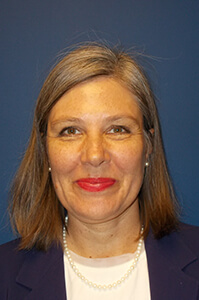Mar
14
2017
The Four Pillars Philosophy of Preventing Patient Rehospitalizations
By Lynn Adams, RN, BSN
At Visiting Nurse Health System, our mission is to improve the lives of those we serve. We do that by providing care at home, giving patients the security and comfort of recovery in a familiar environment. Helping patients avoid return trips to the hospital is an important way we fulfill our mission.
Asking the Right Questions
About 10 years ago, several employees of Visiting Nurse attended a seminar lead by Dr. Eric Coleman at Atlanta’s Piedmont Hospital. Before this seminar, I had a rough idea about the importance of preventing rehospitalizations, plus some strategies to employ. Dr. Coleman laid it out in an easy-to-remember format – the pillars of the Care Transitions model. I literally wrote down the four steps to make it easy to remember them when meeting a new patient. Now, years later, the Care Transitions model has become part of my practice and the dialog with patients is natural.
Dr. Coleman is a Colorado physician and researcher who pioneered the Care Transitions method and the Four Pillars philosophy. Following Care Transitions helps us provide a better experience when the patient transfers from the hospital or rehab to home.
Over the same 10 years, preventing rehospitalizations has become the focus for not only home health agencies, but for hospitals as well. I’m proud that Visiting Nurse had the foresight to conduct training in this area early. As a home health nurse, when I see each patient, I keep in mind Dr. Coleman’s Four Pillars philosophy to avoid rehospitalizations. By using the Four Pillars, we empower patients and families with the knowledge they need to accomplish their goal of staying safely in their home.
1. Does this patient have all their medications, and a clear understanding of the schedule, dose, and side effects? Hospitals discharge patients with a list of their medications. It’s common for a new medication to be prescribed, but patients may think they should continue with the medications they were on before hospitalization. The initial visit is the time to clear that up.
2. Does the patient have a dependable caregiver who assists with transportation to appointments, and helps with grocery shopping, errands, and hygiene? We talk with the caregiver to measure their willingness and to be sure they know what’s expected of them. Our social workers can also help our patients by finding resources to assist them with these needs.
3. Have I instructed on early warning signs that their illness is worsening? Do they understand these signs? We help caregivers recognize signs of a worsening illness.
4. Have they made all the necessary appointments with their physicians, scheduled within the next two weeks, including specialists? Hospital discharge forms list upcoming appointments. If there are no appointments made, we either have the patient or family make the appointment while we’re in the home, or get their assurance that they’re going to call that day.
Learn more about Visiting Nurse’s home healthcare services when recovering at home.

